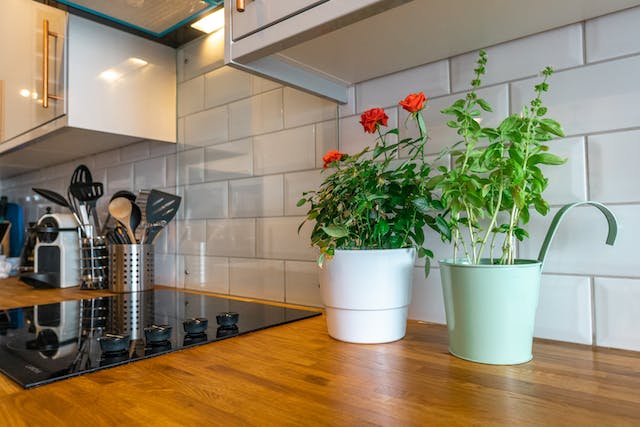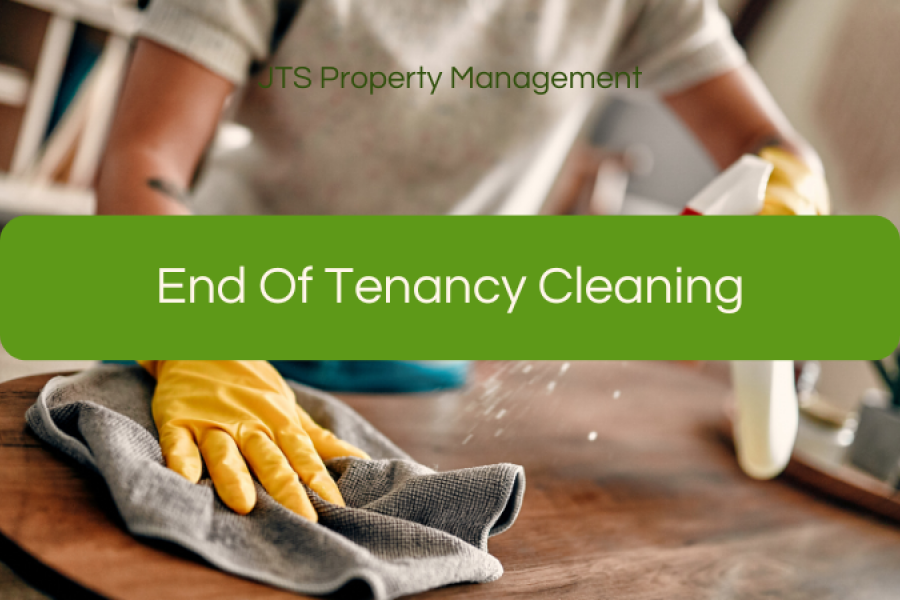Are you facing the daunting task of preparing your rental property for new tenants after the previous ones have moved out? If so, you're not alone. The end-of-tenancy cleaning process can be a significant challenge for landlords, requiring thoroughness and attention to detail to ensure the property is pristine for the next occupants.
The process can be time-consuming and stressful, from scrubbing floors to tackling stubborn stains. However, navigating this phase can be more manageable and rewarding with the right approach and resources.
In this article, we'll explore effective strategies and tips to streamline the end-of-tenancy cleaning process, helping you maintain your property's appeal and value.
End of Tenancy Cleaning Explained
An end-of-tenancy cleaning is a thorough cleaning of a rental property right after tenants have vacated, in preparation for new ones. It involves deep cleaning every bit of the property, including floors, walls, appliances, fixtures, and any other surfaces.
The goal is to restore the property to its original condition, removing any traces of the previous occupants and ensuring it is clean and presentable for the next tenants.
End-of-tenancy cleaning typically goes beyond regular cleaning tasks and may involve more intensive efforts to address accumulated dirt, stains, and grime. This process is crucial for landlords to maintain the property's appeal, uphold cleanliness standards, and potentially attract new tenants.

Considerations Before End-of-Tenancy Cleaning
Before beginning the end-of-tenancy cleaning process, landlords should consider several factors to ensure a smooth and effective tenant transition:
- Review rental agreement terms for cleaning responsibilities.
- Determine outgoing tenant responsibilities and communicate them clearly.
- Conduct a pre-move-out property inspection to identify cleaning needs.
- Allocate budget and resources for cleaning, including supplies or professionals.
- Plan the cleaning timeframe according to move-in dates for new tenants.
- Ensure adherence to health and safety guidelines during the cleaning process.
- Maintain open communication with outgoing tenants regarding expectations.
- Document the property's condition before and after cleaning for reference.
By considering these factors before beginning the end-of-tenancy cleaning process, landlords can ensure that it is efficient, effective, and in compliance with legal and contractual obligations. This helps minimize disputes and ensures a positive experience for both outgoing and incoming tenants.
Essential Components of End-of-Tenancy Cleaning
A comprehensive end-of-tenancy cleaning checklist should cover all areas of the rental property to ensure nothing is overlooked. Here's a detailed guide to what should be included:
General Cleaning
Begin by dusting and wiping down all surfaces throughout the property, including countertops, shelves, and baseboards. It's essential to pay attention to detail, ensuring that no area is overlooked. Take the time to clean light fixtures, ceiling fans, and vents, removing any accumulated dust or grime.
Don't forget to address corners and ceilings, removing cobwebs to give the space a fresh and inviting look. Additionally, wipe down doors, door frames, and handles to ensure they're clean and free of fingerprints or smudges.
Kitchen
The kitchen is often one of a rental property's most heavily used areas, so thorough cleaning is crucial. Start by cleaning the inside and outside of appliances, including the refrigerator, oven, microwave, and dishwasher.
Considerations Before End-of-Tenancy Cleaning
Before beginning the end-of-tenancy cleaning process, landlords should consider several factors to ensure a smooth and effective tenant transition:
- Review rental agreement terms for cleaning responsibilities.
- Determine outgoing tenant responsibilities and communicate them clearly.
- Conduct a pre-move-out property inspection to identify cleaning needs.
- Allocate budget and resources for cleaning, including supplies or professionals.
- Plan the cleaning timeframe according to move-in dates for new tenants.
- Ensure adherence to health and safety guidelines during the cleaning process.
- Maintain open communication with outgoing tenants regarding expectations.
- Document the property's condition before and after cleaning for reference.
By considering these factors before beginning the end-of-tenancy cleaning process, landlords can ensure that it is efficient, effective, and in compliance with legal and contractual obligations. This helps minimize disputes and ensures a positive experience for both outgoing and incoming tenants.
Essential Components of End-of-Tenancy Cleaning
A comprehensive end-of-tenancy cleaning checklist should cover all areas of the rental property to ensure nothing is overlooked. Here's a detailed guide to what should be included:
General Cleaning
Begin by dusting and wiping down all surfaces throughout the property, including countertops, shelves, and baseboards. It's essential to pay attention to detail, ensuring that no area is overlooked. Take the time to clean light fixtures, ceiling fans, and vents, removing any accumulated dust or grime.
Don't forget to address corners and ceilings, removing cobwebs to give the space a fresh and inviting look. Additionally, wipe down doors, door frames, and handles to ensure they're clean and free of fingerprints or smudges.
Kitchen
The kitchen is often one of a rental property's most heavily used areas, so thorough cleaning is crucial. Start by cleaning the inside and outside of appliances, including the refrigerator, oven, microwave, and dishwasher.

Degrease and scrub stovetops and exhaust fans to remove built-up grease and grime. Wipe down cabinets, countertops, and backsplashes to ensure they're free of spills or stains. Finally, clean sinks and faucets, paying attention to areas with limescale or mineral buildup.
Bathroom
In the bathroom, focus on scrubbing and disinfecting all surfaces, including toilets, sinks, bathtubs, and showers. Use appropriate cleaning products to remove soap scum, mildew, and other stains.
Clean and polish mirrors to ensure they're streak-free and sparkling. Wipe down tiles and grout, paying attention to any areas that may be discolored or need extra attention. Additionally, empty and clean out cabinets and drawers, removing any leftover toiletries or personal items.
Flooring
Cleaning the floors is essential to give the rental property a fresh and clean appearance. Start by vacuuming or sweeping all floors, including carpets, hardwood, laminate, and tile. Pay special attention to corners and edges where dirt and dust may accumulate.
After vacuuming, mop hard floors with appropriate cleaning solutions to remove any remaining dirt or grime. If there are any stains or spots on carpets or rugs, spot clean or steam clean them to restore their appearance.
Windows and Window Coverings
Clean windows, window sills, and tracks to remove dirt, dust, and fingerprints. Use a glass cleaner or a mixture of vinegar and water to ensure windows are streak-free and sparkling.
Dust or wash blinds, curtains, and other window coverings to remove any accumulated dust or dirt. This will not only improve the appearance of the windows but also allow more natural light to enter the space.

Fixtures and Hardware
Take the time to polish and shine metal fixtures throughout the property, such as faucets, handles, and knobs. This will give the space a polished and well-maintained look. Check and replace any burnt-out light bulbs to ensure all areas are well-lit and inviting.
Exterior and Outdoor Areas (if applicable)
If the rental property has exterior or outdoor areas, such as entryways, porches, or balconies, don't forget to clean and tidy them up as well. Sweep and remove any debris or clutter from these areas to enhance curb appeal. Additionally, clean windows and doors leading to outdoor spaces to ensure they're clean and inviting.
Final Touches
Before completing the cleaning process, take a final walk-through of the property to ensure everything is in order. Ensure all trash and recycling bins are emptied and cleaned, and dispose of any remaining items left behind by previous tenants. Finally, check for any damages or maintenance issues that need attention before new tenants move in, addressing them promptly to ensure a smooth transition.
Wrapping Up
Before undertaking end-of-tenancy cleaning, landlords should review rental agreements, communicate clearly with outgoing tenants, and conduct thorough property inspections. Allocating resources and adhering to health and safety guidelines are crucial.
Open communication ensures understanding of expectations, while documentation safeguards against disputes. JTS Property Management can facilitate this process by offering guidance, coordinating cleaning services, and ensuring compliance with legal and contractual obligations, ultimately streamlining the transition between tenants for a seamless experience.


